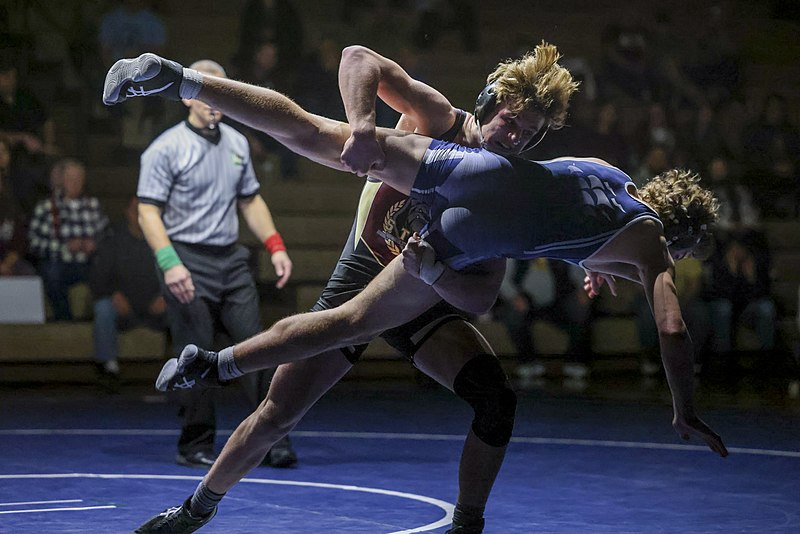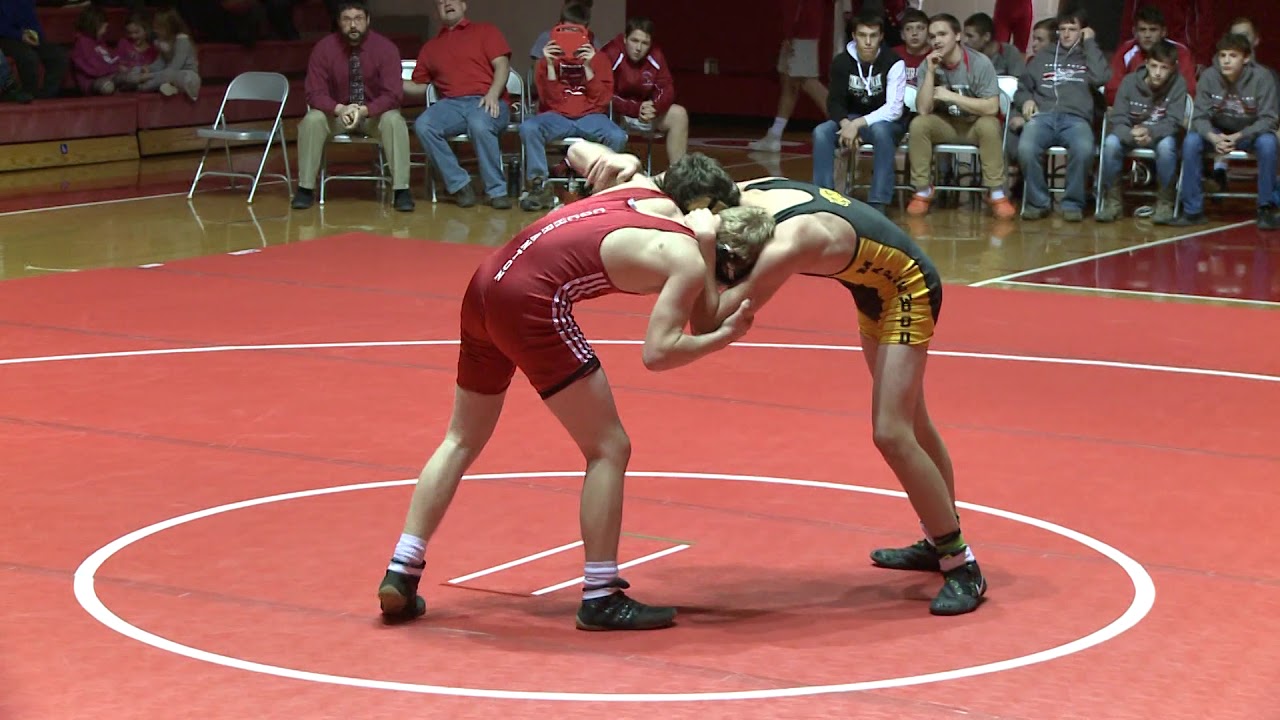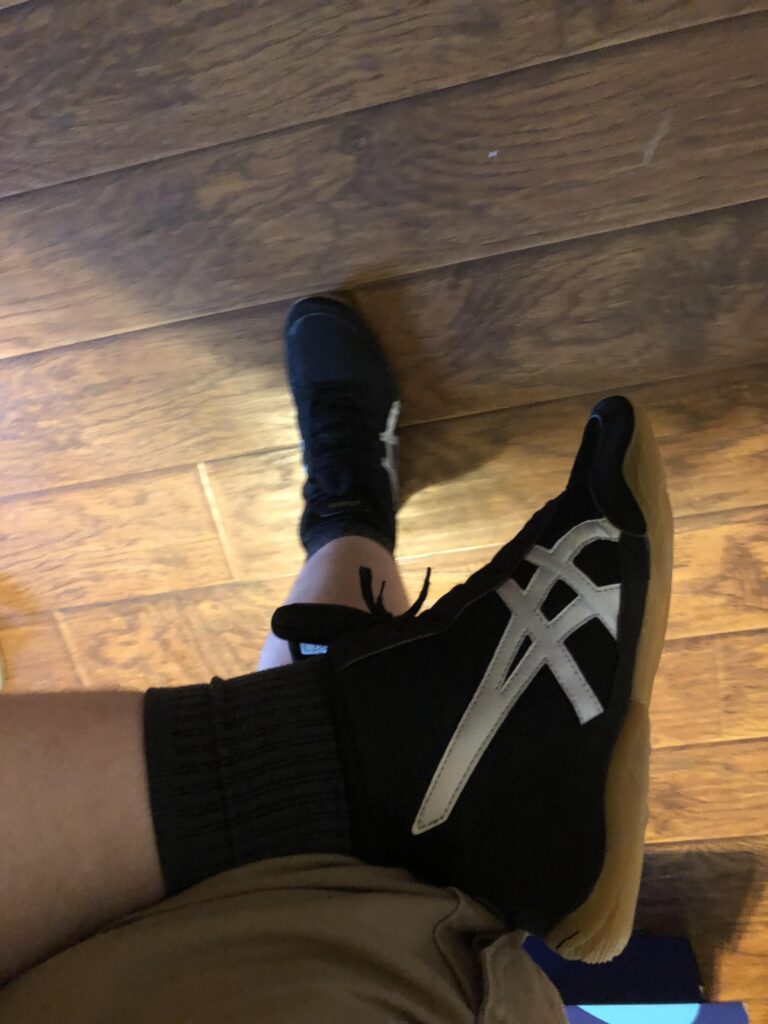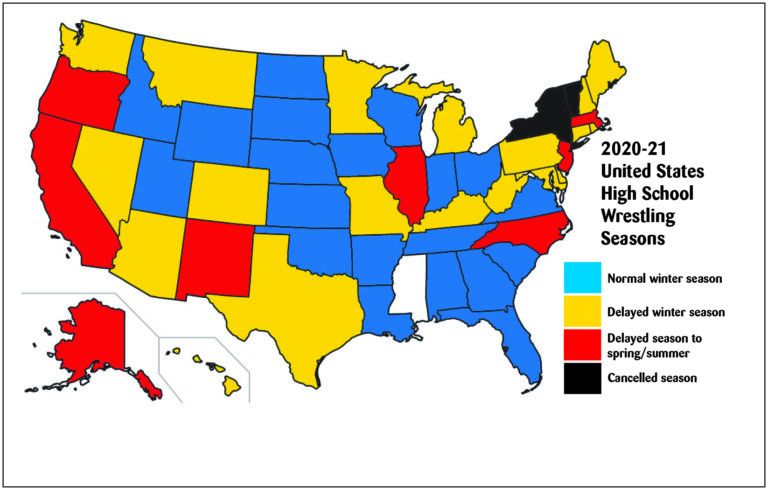How Long is a High School Wrestling Match: Quick Guide
A high school wrestling match typically lasts for six minutes. It is divided into three periods, each lasting two minutes.
Wrestling at the high school level is a test of strength, skill, and strategy. This sport demands not only physical prowess but also a sharp mind to outmaneuver opponents. Each match is a brief, intense battle, where athletes push their limits within the confines of a six-minute timeframe.
These matches are structured in a way that allows wrestlers to demonstrate their technique, endurance, and quick thinking. The three periods in a match offer a dynamic challenge, requiring competitors to adapt and respond to their opponent’s moves swiftly. Understanding the duration and structure of these matches is crucial for anyone involved in or following high school wrestling. This knowledge enhances the appreciation of the sport’s complexity and the athletes’ dedication.
Introduction To High School Wrestling
High school wrestling thrills students and spectators alike. It’s a sport of strength, agility, and strategy. Wrestlers compete one-on-one to pin their opponent to the mat. This sport builds character and teaches valuable life skills. Let’s explore the basics and its role in high school sports.
The Basics
- Matches consist of three periods.
- Each period lasts two minutes.
- Wrestlers earn points for various moves.
- The goal is to pin the opponent.
- Matches can end early with a pin.
Significance In High School Sports
Wrestling stands out in high school sports. It promotes individual growth and team support. Wrestlers learn discipline and perseverance. These athletes often become leaders. Wrestling also offers a path to scholarships and higher education.
Match Structure And Duration
Understanding the structure and duration of a high school wrestling match is key for athletes and fans alike. Each match consists of carefully timed periods with specific rules for extensions in the case of a tie. Let’s break down the timing and overtime regulations that govern these intense competitions.
Periods And Length
A typical high school wrestling match is divided into three periods. These periods determine the match’s pace and strategy. Wrestlers must be quick, strong, and smart to win within this time frame.
- First Period: The match begins with a 1-minute first period.
- Second Period: This period lasts for 2 minutes.
- Third Period: The final period also spans 2 minutes.
Therefore, a standard match without interruptions lasts 5 minutes in total. Wrestlers need to showcase their skills within this time to secure victory.
Overtime Rules
If the score is tied after the three regular periods, the match moves into overtime. The aim is to find a winner in the most fair and decisive way possible.
| Overtime Phase | Duration |
|---|---|
| 1. Sudden Victory | 1 minute |
| 2. Tiebreaker 1 | 30 seconds |
| 3. Tiebreaker 2 | 30 seconds |
Overtime starts with a sudden victory period, where the first score wins the match. If still tied, two tiebreaker periods follow. Wrestlers must give their all to outperform their opponents during these critical moments.
Weight Classes And Categories
Understanding weight classes and categories is key in high school wrestling. These factors dictate which wrestlers compete against each other. This ensures fairness and safety in the sport. Let’s explore how these divisions affect match duration.
Determining Factors
High school wrestling involves various weight classes. Each class allows wrestlers of similar weights to compete. This prevents mismatches in size and strength.
Weight classes range from 106 pounds to 285 pounds. Wrestlers must weigh in before matches. This confirms they are competing in the correct category.
Impact On Match Length
The weight class of wrestlers can influence the length of a match. Lighter weight classes often feature faster, more agile wrestlers. This could lead to quicker matches due to rapid moves and pins.
Heavier weight classes might have longer bouts. These wrestlers use more strength and may grapple for position longer before securing a pin.
Each high school wrestling match consists of three periods. These periods can vary from one to two minutes each. Total match time usually ranges from six to eight minutes, barring any overtime.

Credit: www.nfhs.org
Pre-match Procedures
Before the whistle blows and the match begins, high school wrestlers go through essential pre-match procedures. These rituals ensure fair play and safety. Let’s explore the crucial steps.
Weigh-ins
Wrestlers must meet weight class requirements. Weigh-ins happen hours before the match. Here’s what takes place:
- Wrestlers arrive on time.
- They remove excess clothing.
- Each wrestler steps on the scale.
- Officials record the weight.
This step sets the stage for competition. It ensures matches are fair and balanced.
Warm-ups
Warm-ups are vital for peak performance. Wrestlers follow a systematic routine:
- Start with light jogging.
- Shift to dynamic stretches.
- Practice drills on the mat.
- Visualize winning moves.
These exercises get the blood flowing. They prepare muscles and minds for the challenge ahead.
Scoring System Explained
Understanding the scoring system in high school wrestling is key to enjoying the sport. Whether you are a wrestler, a coach, or a spectator, knowing how points are awarded and what determines a win makes each match more exciting. Let’s dive into the details of how wrestlers score points and secure victory on the mat.
Points Awarding
Wrestlers earn points through various moves and positions. Points reflect control and skill. Here’s how points add up:
- Two points for a takedown
- Two points for a near fall (short time)
- Three points for a near fall (long time)
- One point for an escape
- One point for a reversal
- Penalty points vary (opponent infractions)
Points can turn a match around. Wrestlers strive for higher-scoring moves. A takedown can shift momentum instantly.
Winning Criteria
To win a high school wrestling match, athletes aim for the highest score or a pin. Here’s what leads to victory:
- Highest score at final buzzer wins
- Pin (both shoulders down) ends match immediately
- Technical fall (15-point lead) stops match
- Major decision (8-14 point lead) adds team points
- Decision (1-7 point lead) is a standard win
A pin is a wrestler’s ultimate goal. It brings instant victory, no matter the score. A technical fall shows clear dominance. Decisions reflect a closer contest, with major decisions offering extra team points.

Credit: www.nfhs.org
Common Strategies And Techniques
Understanding the common strategies and techniques in high school wrestling is key to grasping the sport’s intricacies. Wrestlers train hard to master offensive moves and defensive tactics. These skills determine the outcome of each match. Both beginners and experienced wrestlers constantly refine these techniques to gain an edge over their opponents.
Offensive Moves
Offensive moves are crucial for scoring points and controlling the match. Wrestlers use a variety of takedowns, throws, and pins to outmaneuver their opponents. Here are some popular offensive techniques:
- Single Leg Takedown: Wrestlers grab one leg of the opponent to take them down.
- Double Leg Takedown: Both legs of the opponent are targeted for a more powerful takedown.
- High Crotch: A move aimed at the opponent’s thigh to lift and flip them down.
- Fireman’s Carry: Involves lifting the opponent over the shoulder and onto the mat.
Defensive Tactics
A good defense can be as important as a strong offense. Defensive tactics help wrestlers avoid being scored on and can provide opportunities to counter-attack. Key defensive moves include:
- Sprawl: Thwarting a takedown by extending the legs back and away from the opponent.
- Whizzer: An overhook used to counter a single leg takedown attempt.
- Crossface: A move to push the opponent’s face away to prevent a takedown.
- Bridge: Arching the back off the mat to avoid a pin.
Role Of Coaches And Referees
The roles of coaches and referees are vital in high school wrestling matches. Coaches provide the necessary guidance and strategy for wrestlers. Referees ensure the match is fair and safe. Together, they help create a competitive and respectful environment. Let’s delve into the specifics of their roles.
Guidance And Strategy
Coaches are pivotal in shaping a wrestler’s journey. They craft match strategies and offer real-time advice. A coach’s insight can turn the tide of a match. They focus on:
- Technique improvement for each wrestler
- Mental preparation to build confidence
- Conditioning to enhance stamina and strength
During matches, coaches observe from the sidelines. They shout instructions and encouragement. Their role is to keep wrestlers focused and to adjust tactics as needed.
Ensuring Fair Play
Referees are the guardians of fair play. They enforce rules and maintain safety. Their decisions are critical and include:
- Starting and stopping the clock
- Awarding points for moves and holds
- Calling out violations
Referees watch closely for illegal moves and ensure wrestlers compete in a safe manner. Their calls can be decisive and are made with impartiality. A fair match depends on their expertise and integrity.
Preparing For A Wrestling Match
Before stepping onto the mat, wrestlers need solid prep. A high school wrestling match demands strength, technique, and a sharp mind. Let’s explore the essentials for dominating the match.
Physical Training
Wrestlers require peak physical condition. Intense workouts build endurance and power.
- Cardiovascular exercises keep wrestlers agile.
- Strength training boosts muscle and grip.
- Drills perfect moves and takedowns.
- Flexibility routines prevent injuries.
Consistent practice refines technique. Wrestlers should master their weight class moves.
Mental Readiness
A focused mind secures victories. Mental prep is as crucial as physical.
- Visualization sharpens in-match tactics.
- Goal setting motivates and directs training.
- Breathing techniques calm nerves.
- Positive self-talk builds confidence.
Reviewing past matches identifies improvement areas. Wrestlers learn from both wins and losses.

Credit: en.wikipedia.org
Frequently Asked Questions
How Many Minutes Is High School Wrestling?
High school wrestling matches are typically 6 minutes long, divided into three periods. Each period lasts 2 minutes, ensuring a fast-paced and engaging competition. This format is standard across the United States, fostering consistency in high school wrestling tournaments and matches.
How Many Hours Does A High School Wrestling Match Last?
A typical high school wrestling match lasts about six minutes, divided into three two-minute periods.
How Many Rounds Is A High School Wrestling Match?
A high school wrestling match typically consists of three rounds. Each round lasts two minutes, making the total match time six minutes. This format tests the wrestlers’ skill, endurance, and strategy.
How Long Is An Entire Wrestling Match?
An entire wrestling match typically lasts about 15 to 20 minutes. This duration can vary based on the competition level and specific rules. Each match aims to showcase athletes’ skill, endurance, and strategy within this timeframe.
What Is The Duration Of A High School Wrestling Match?
High school wrestling matches typically consist of three periods, totaling six minutes of match time.
Conclusion
Wrapping up, high school wrestling matches offer fast-paced excitement, typically lasting around six minutes of regulation time. This duration ensures athletes must blend strategy with peak physical performance. Remember, victory hinges on not just strength, but skillful time management as well.
For aspiring wrestlers and fans alike, understanding match length is key to appreciating the sport’s intense dynamics.






